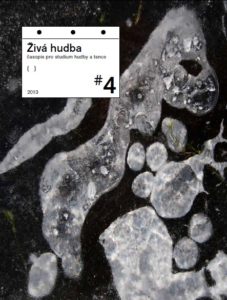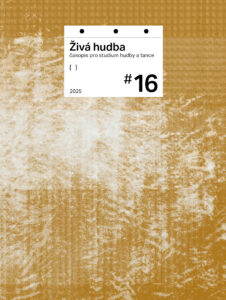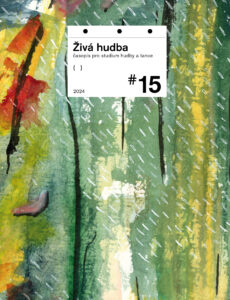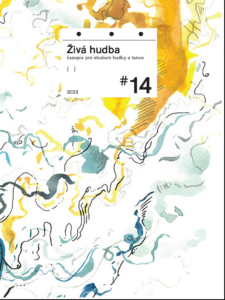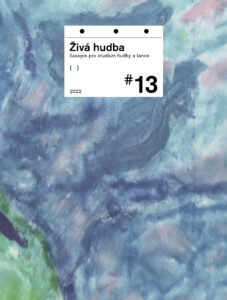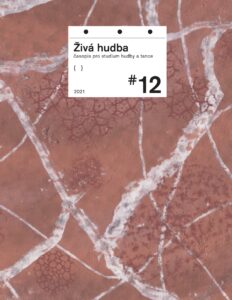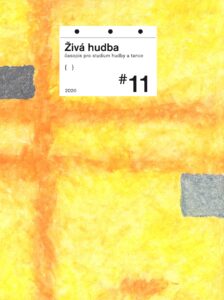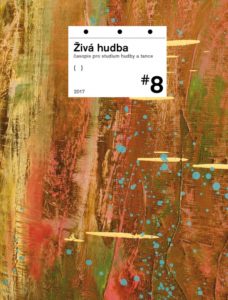Abstrakt The study presented is part of a larger work focusing on the relationship between musical-experienced time and objective, measurable, astronomical time. The kineaesthetic connection of the listener to the pulse that comes from the external world is considered to be the crucial aspect of this relationship where prospective strategies of the incoming audio stimuli dominate. The opposite pole is the complete independence of the listener on astronomical time represented by gesture. This is linked with the representation of temporal events in memory and the dominating retrospective evaluation of the stimuli that are heard. This is the axis that is dealt with – mainly the contents of key music theoretical concepts inherent to this topic: pulse, tactus, groove, rhythm, meter, hypermeter, tempo, motion-rate, speed and accent. The important point is that the range of the meanings of these terms is very wide and strongly depends on the authors´ focus and language and also geographic and historic differences. Clarifyin the concepts leads in a natural and unplanned way to the comparison and integration of part of Czech (particularly prof. Tichý´s) terminology into the broader context of English literature available to the author.


Iva Oplištilová:
Pulse ↔ gesture
Stati a studie / Živá hudba 2013/4 / Publikováno 29. 1. 2013
Abstrakt:
The study presented is part of a larger work focusing on the relationship between musical-experienced time and objective, measurable, astronomical time. The kineaesthetic connection of the listener to the pulse that comes from the external world is considered to be the crucial aspect of this relationship where prospective strategies of the incoming audio stimuli dominate. The opposite pole is the complete independence of the listener on astronomical time represented by gesture. This is linked with the representation of temporal events in memory and the dominating retrospective evaluation of the stimuli that are heard. This is the axis that is dealt with – mainly the contents of key music theoretical concepts inherent to this topic: pulse, tactus, groove, rhythm, meter, hypermeter, tempo, motion-rate, speed and accent. The important point is that the range of the meanings of these terms is very wide and strongly depends on the authors´ focus and language and also geographic and historic differences. Clarifyin the concepts leads in a natural and unplanned way to the comparison and integration of part of Czech (particularly prof. Tichý´s) terminology into the broader context of English literature available to the author.
Citace:
Iva Oplištilová. Pulse ↔ gesture. Živá hudba 2013/4. On-line <https://ziva-hudba.info/pulse-%e2%86%94-gesture/> [02. 1. 2026].
Kopírovat
Vyšlo v časopise
Živá hudba 2013/4
Rubrika: Stati a studie
Publikováno: 29. 1. 2013
PDF: download
Klíčová slova:
analysis, analýza, specious present, teorie, time, zvuk
Články autora:
Iva Oplištilová (9)
Aktuální čísla časopisu můžete koupit v Nakladatelství AMU.
Citace:
Iva Oplištilová. Pulse ↔ gesture. Živá hudba 2013/4. On-line <https://ziva-hudba.info/pulse-%e2%86%94-gesture/> [02. 1. 2026].
Kopírovat
Další články
-
Lucie Hayashi:
První hybridní sympozium mezinárodní Etnochoreologické skupiny při ICTM si vzalo na…
Zprávy | 2021/12 -
Jaromír Havlík:
Na okraj Sinfonie Luciana Beria. Několik analytických poznámek
Stati a studie | 2019/10 -
Iva Oplištilová:
Martin Iddon: New Music at Darmstadt: Nono, Stockhausen, Cage, and Boulez
Recenze | 2018/9 -
Iva Oplištilová:
Nelineární čas v post-cageovské hudbě
Stati a studie | 2010/1 -
Daniela Machová, Dorota Gremlicová, Lucie Hayashi:
Tanec v ekonomických kontextech: teoretická východiska a praktické souvislosti
Stati a studie | 2020/11 -
Iva Oplištilová:
Lubomír Spurný: Heinrich Schenker
Recenze | 2013/4 -
Iva Oplištilová:
Puls ↔ gesto
Stati a studie | 2013/4 -
Roman Zabelov:
Amplifikace akordeonu: výzkum a konstrukce vnitřního mikrofonního systému
Stati a studie | 2019/10

